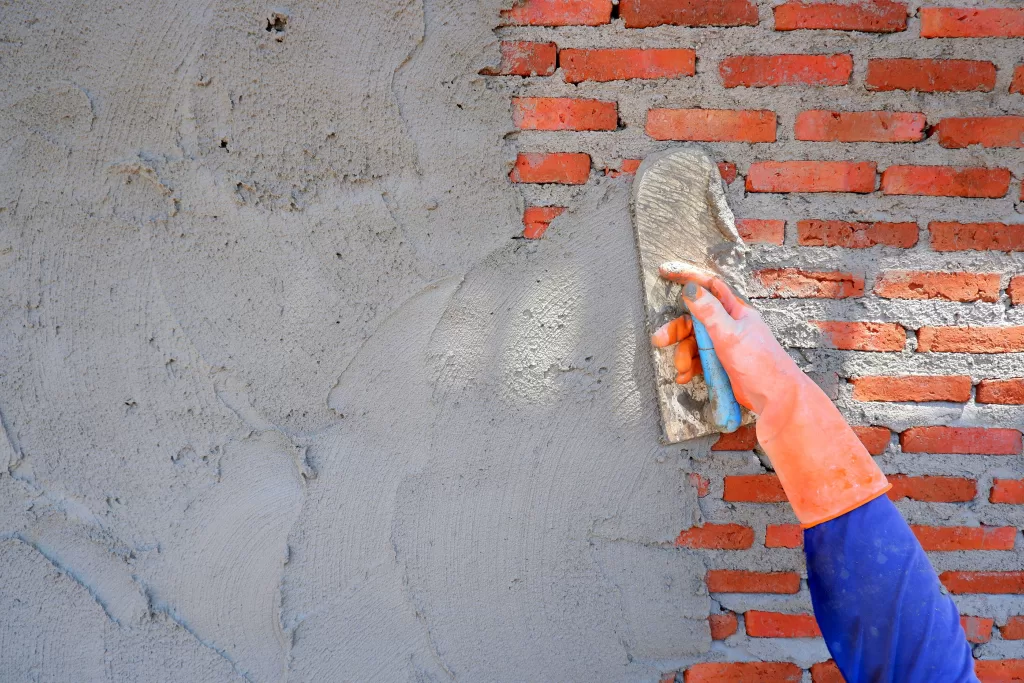Introduction
Exterior plastering is an important part of home and building construction, providing protection and a pleasing appearance. A properly applied and adequate layer of plaster will not only improve your structure’s appearance, but will also serve as a long-lasting protective barrier against the elements. This practical, comprehensive guide explains everything you need to know for high quality, lasting results when exterior plastering.
Understanding Exterior Plastering
Exterior plastering refers to the process of applying a layer of protective and/or decorative coat to the external walls of a building. This cover, which may be rendered onto a wall, is generally of cement, lime or acrylic-based paste, and protects the structure from weather and provides an element of texture and decoration. The materials and methods selected can make a big difference in the life and aesthetics of the plaster.
Benefits of Exterior Plastering
Protection Against Elements
The building is also protected by a cover of plaster to prevent rain, wind and temperature changes from impacting the steel and mortar. Tight seal prevents water seepage keeping your building mold free and damage free.
Aesthetic Enhancement
A finely finished plaster gives a building a sophistication and personality. With an array of texture and finishes available, plaster is flexible in achieving the design intent of architectural styles.
Improved Insulation
Plaster can help improve a home’s insulation and energy efficiency. By blocking the heat fibers it helps to keep indoor space comfortable saving on energy use.
Preparation for Plastering
Good preparation is key in any successful plastering job. This is done by cleaning the surface, fixing any cracks or damages that may appear, and/or a proper primer being applied. It also ensures you have a solid base so your plaster stuff sticks.
Choosing the Right Plaster
Ensure to choose the right type of plaster for durability and looks:
Cement Plaster
Cement plaster is durable and strong. It is perfect for outdoor conditions and can be painted for a smooth finish.
Lime Plaster
Lime plaster is also breathable and flexible, returning to its original shape after bending, making it a good choice for old and new buildings. It provides a clear finish and is crack resistant.
Acrylic Plaster
The acrylic plaster offers the finish options as part of a flexible and weather-resistant finish. It comes in an array of colors and textures that allow for creative design choices.
Application Techniques
Plastering is an art form it takes special skill and precision. It usually requires several coats:
Scratch Coat
The scratch coat is the initial layer setting on top. It is roughened to give a key for the over coats to give the better adhesion.
Brown Coat
The nut is the second layer and is thick and strong. It’s leveled and smoothed to prepare it for the final finish.
Finish Coat
Finish coat is the final layer that provides the texture and looks. Different textures can also be created. This increases the aesthetic value of the building.
Tools and Equipment
Having the right tools is crucial for good and fast plastering. Key tools include:
- Trowels: Use to apply and smooth plaster.
- Hawks: To carry plaster for spreading and ease of access.
- Floats: For finishing and texturing.
- Mixers: Required to ensure a uniform mixture of the plaster.
Good tools will help give you a professional look and help with the plastering.
Maintenance and Care
With regular upkeep, outside stucco can last forever. This may involve checking for cracks, cleaning the surface of debris and algae, and reinstalling a coat of paint or penetrating sealer. If you have any issues, get them fixed within a reasonable time to avoid them turning into big issues.
Hiring Professional Plasterers
Although some want to apply plaster themselves, using professionals guarantees quality and convenience. The professionals offer skills and knowledge and face problems and accomplish desired results. The work of a skilled plaster will improve the look of the building and maintain the structural integrity and protection.
Conclusion
Building owners who want to keep the aesthetic appearance and structural integrity of their property need to have their exterior walls coated by a professional with no less than the best. Homeowners can protect and beautify their home by using the right materials and methods. The complete process of plastering, request either DIY or professional. Whether you want to hire a professional service or do it yourself, a thorough knowledge of the process ensures that the task is done appropriately and has a long life. When properly installed, applied and maintained, exterior plastering in Manukau adds beauty and durability to the life of a building.
